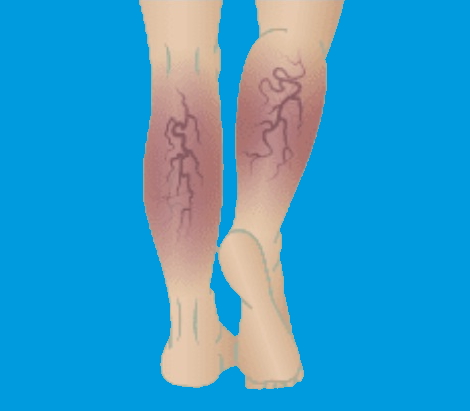Itching Legs / Burning Legs
ITCHING AND BURNING LEGS Q & A
What Are Itching Legs and Burning Legs?
An itching and burning feeling in the legs can be indicative of an underlying venous issue. Some skin conditions or diabetes can cause itching and burning legs. However, most patient cases we see at Alliance are due to circulatory problems such as chronic venous insufficiency (CVI), varicose veins and/or spider veins.
What Are Itching and Burning Legs Symptoms?
Itching and burning sensations in the legs can be symptoms of a venous issue, such as CVI or varicose veins. Other symptoms of these venous conditions include feelings of heat, tingling, numbness, “crawling” and throbbing. Sometimes, veins can be seen and felt on itching and burning legs. Scratching will not relieve the discomfort and itchiness.
If CVI is also present, additional symptoms may include:
- Edema
- Throbbing
- Achiness and/or heaviness sensations
- Thickening skin
- Discoloration of the skin
- Cramping in legs
- Worsening symptoms with prolonged standing and walking, with some relief with rest and elevation.


Frequently Asked Questions
Itching Legs and Burning Legs Patient Education
What Does Itching and Burning Legs Feel Like?
Patients describe itching and burning legs as uncomfortable, with no relief from scratching. There may also be crawling sensations through the legs, and some tingling and throbbing. Generally, itching and burning legs are more of a nuisance, but can become chronic and debilitating over time.
What Causes Burning and Itching Legs?
When circulation is poor and compromised, blood has a difficult time fighting gravity and pools in the legs, causing fluid to leak into surrounding soft tissue. The result is inflammation and irritation, which manifests as itching and burning.
To elaborate, when a patient has chronic venous insufficiency (CVI) vein valves are damaged, weak and stop working properly. Blood flows back down into the legs instead of returning up to the heart. As blood pools, veins begin to bulge. Bulging, damaged veins are known as varicose veins. They are called spider veins when the pooling is indicated in smaller, more superficial veins. Millions of people are affected by varicose veins and spider veins.
What Are Risk Factors for Itching and Burning Legs?
Patients with venous conditions are susceptible to itching and burning legs.
Can Burning and Itching Legs Be Prevented?
A healthy lifestyle including a balanced diet, exercise and maintaining an appropriate weight can reduce the risk of itching and burning legs. Also, early intervention and treatment of the underlying venous condition will prevent itching and burning legs from becoming chronic.
Do Itching Legs and Burning Legs Need Treatment?
Itching and burning legs are often a symptom of a greater circulation problem. By treating the venous condition, itching and burning will be reduced or eliminated. A vascular physician can diagnose the underlying venous disease and provide a treatment plan.
What Are Itching/Burning Legs Treatments?
Depending on the severity of the condition, treatment may begin with conservative measures. These include:
- Elevating the legs
- Using compression stockings
- Getting regular exercise
- Losing weight to reduce pressure on legs and veins
If symptoms continue or are severe, a vascular specialist may recommend advanced, minimally invasive treatments. The goal of these treatments is to restore circulation by eliminating diseased veins and blood clots. With proper treatment, blood is redirected to flow through healthy veins. Treatments include:
- Endovenous Ablation
- Microphlebectomy
- Sclerotherapy
What to Expect from Burning/Itching Legs Treatment?
Treating itching and burning legs requires an accurate diagnosis of what is causing the problem. If after examining your legs, Dr. Eradat suspects venous disease conditions like CVI or DVT, he may recommend tests to confirm the diagnosis. These tests can include duplex ultrasound or venography, a special kind of X-ray that uses dye to show the veins and any blood clots.
At Alliance, we use the latest protocols in advanced diagnostics and treatments for managing a patient’s vein and vascular issues. Patients of minimally invasive treatments for burning/itching legs will be able to go home the same day as the procedure. Since only a small incision is needed, there are no stitches. Also, recovery time is much shorter than traditional surgery, so daily activities can often be resumed in 24 hours.


631 West Avenue Q, Suite A
Palmdale, CA 93551
Phone 661-480-5956
Fax 661-480-5976
Hours
- Monday–Friday
8 am – 5pm
Resources
Connect

